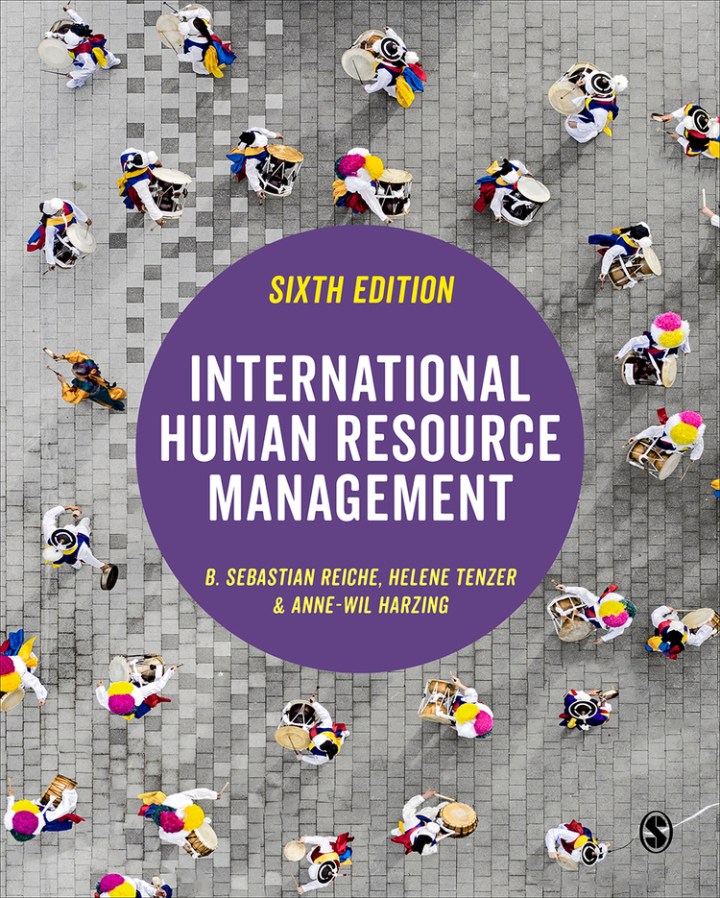
International Human Resource Management 6th Edition
PUBLISHER: Sage
Trường ĐH, Nhóm, Thư Viện: Gọi 0915920514 để báo giá eBook hosting trên Vital Source hoặc mua Sách In
Quản lý nguồn nhân lực quốc tếĐược viết bởi các chuyên gia hàng đầu trong lĩnh vực này, cuốn sách giáo khoa bán chạy nhất này đã hướng dẫn hơn 25.000 sinh viên trên 130 quốc gia thông qua các nghiên cứu về Quản lý nguồn nhân lực quốc tế. Vẫn giữ được lợi thế quan trọng, tính chặt chẽ về mặt học thuật và phạm vi bao quát, ấn bản thứ sáu đã được cập nhật kỹ lưỡng để bao gồm nội dung tiên tiến về đại dịch Covid-19, số hóa và trí tuệ nhân tạo (AI), cũng như một loạt các nghiên cứu điển hình mới và các ví dụ thực tế từ các tổ chức trên toàn cầu. Thích hợp cho sinh viên đại học và sau đại học về Quản lý nguồn nhân lực quốc tế. Giảng viên có thể truy cập trang web đồng hành để truy cập nhiều tài nguyên trực tuyến được thiết kế để hỗ trợ việc giảng dạy, bao gồm hướng dẫn giảng dạy, PowerPoint, video với các câu hỏi và câu trả lời về tư duy phản biện cũng như nội dung chọn lọc từ nền tảng SAGE Business Cases. B. Sebastian Reiche là Giáo sư về Quản lý Nhân sự tại Trường Kinh doanh IESE ở Barcelona. Anne-Wil Harzing là Giáo sư Quản lý Quốc tế tại Đại học Middlesex, London, Giáo sư thỉnh giảng tại Đại học Tilburg và là thành viên của Học viện Kinh doanh Quốc tế. Helene Tenzer là Trợ lý Giáo sư về Quản lý Quốc tế tại Trường Quản lý LMU Munich.
List of Figures and TablesYour Guide to This BookOnline ResourcesAbout the EditorsAbout the ContributorsAbbreviationsIntroductionFrom the early beginnings to the presentIntellectual rootsA brief overview of the chapters’ contentsWhat makes this book different?Who is this book for?PART I Cultural, Comparative and Organizational Perspectives on IHRM1 Comparative Human Resource Management1.1 Introduction1.2 Globalization and HRM1.3 The importance of context1.4 Differences in HRM practice1.5 Summary and conclusions: Future issues in comparative HRM1.6 Concluding remarks2 Culture and Cross-Cultural Management2.1 Introduction2.2 Positivist views: ‘Culture and values’2.3 Interpretive views: ‘Culture and meanings’2.4 Critical views: ‘Culture and power’2.5 The strength of combining all three views on culture3 Multinational Companies and Institutional Environments3.1 Introduction3.2 Varieties of host country environments3.3 Understanding how MNCs act in diverse host country environments3.4 Host country effects on IHRM practices of MNC subsidiaries3.5 Summary and conclusions4 Approaches to International Human Resource Management4.1 Introduction4.2 Review of IHRM approaches4.3 The concept of HRM and international HRM4.4 Are IHRM models applicable to other contexts?4.5 What are the implications of change for IHRM approaches?4.6 Summary and conclusionsPART II IHRM Functions5 International Assignments5.1 Introduction5.2 Staffing policies5.3 Motives for international assignments5.4 Alternative forms of international assignments5.5 The international assignment process5.6 Dimensions of international assignment success5.7 Summary and conclusions6 Global and Local Resourcing: The Cases of Japan, China and Vietnam6.1 Introduction6.2 Review of HR competencies approach6.3 External labour market changes and internal strategic choice6.4 A capitalist market economy: Japan6.5 Socialist market economies: China and Vietnam6.6 Summary and conclusions7 Training and Development: Developing Global Leaders and Expatriates7.1 Introduction7.2 Training and development in the global environment7.3 Global leaders7.4 The development of global leaders7.5 Expatriate development7.6 Summary and conclusions8 Global Performance Management8.1 Introduction8.2 Key components of PMSs8.3 Factors affecting PMSs8.4 Culture and PMSs8.5 PMSs in seven leading economies: China, Germany, India, Japan, South Korea, UK and USA8.6 PMS for expatriates8.7 Summary and conclusions9 Total Rewards in the International Context9.1 Recap: Differentiating among PCNs, TCNs and HCNs9.2 Introduction: The current state of total rewards9.3 Covid-19 and its effects on international compensation9.4 Other complexities faced by IHR managers9.5 International total rewards objectives for the MNC9.6 Key components of global total rewards programmes9.7 Approaches to international compensation9.8 Repatriation issues9.9 International trends in global total rewards9.10 Summary and conclusionsPART III IHRM Contexts10 Regulation and the Changing Context of International Human Resource Management10.1 Introduction10.2 What is regulation and why is the political context important?10.3 Why are there political agendas to de-regulate?10.4 What are the political and institutional drivers of de-regulation?10.5 The changing nature of regulation in an international context10.6 Summary and conclusions11 The Transfer of Employment Practices Across Borders in Multinational Companies: From Context to Actors11.1 Introduction11.2 Review and critiques of approaches to transfer of practices11.3 Why focus on globalizing actors?11.4 Globalizing actors in emerging market MNCs11.5 Summary and conclusions12 People Management in Cross-Border Mergers and Acquisitions12.1 Introduction12.2 Cultural differences and cross-border M&A performance12.3 What does integration mean?12.4 Managing cross-border integration: The people management implications12.5 Summary and conclusions13 Equal Opportunity, Diversity and Inclusion in the Global Context13.1 Introduction13.2 Equal opportunities13.3 Diversity management13.4 Summary and conclusions14 Corporate Social Responsibility and Sustainability Through Ethical HRM Practices14.1 Introduction14.2 Ethics and corporate social responsibility14.3 International labour standards and decent work14.4 Sustainability through the integration of CSR and HR policy14.5 Summary and conclusionsIndex















